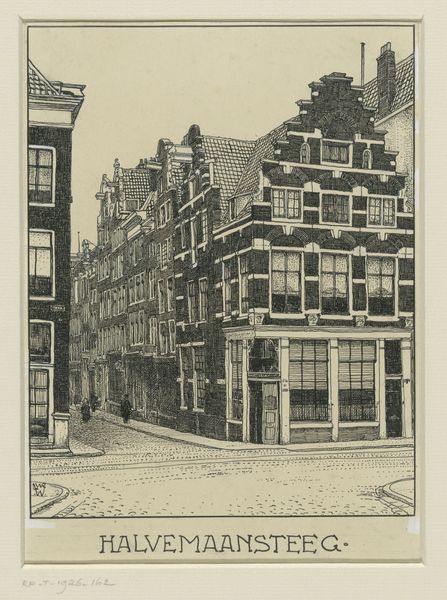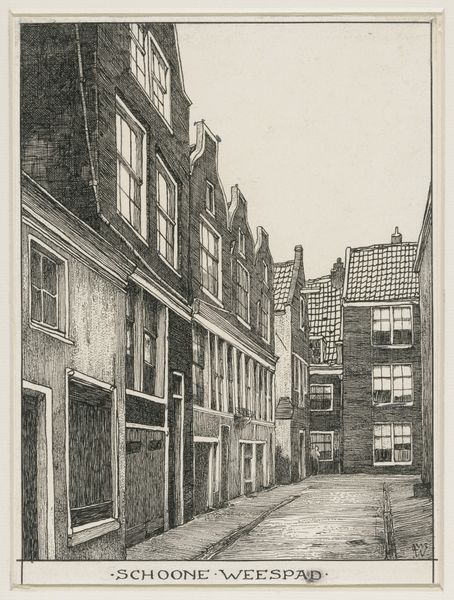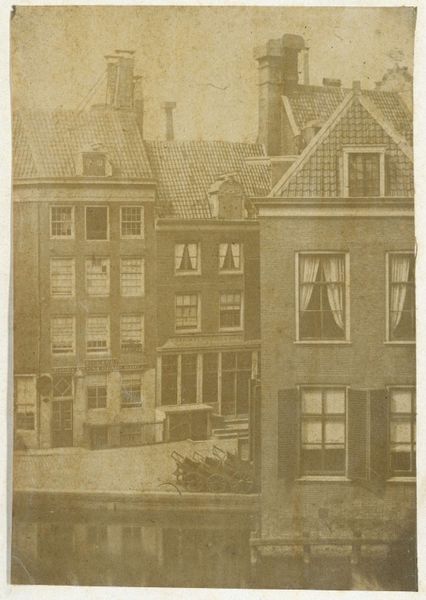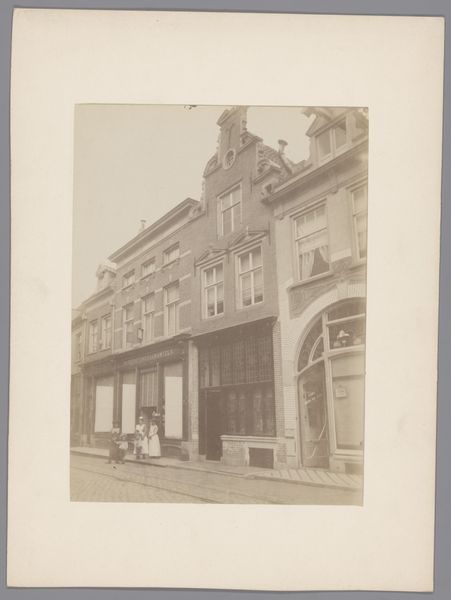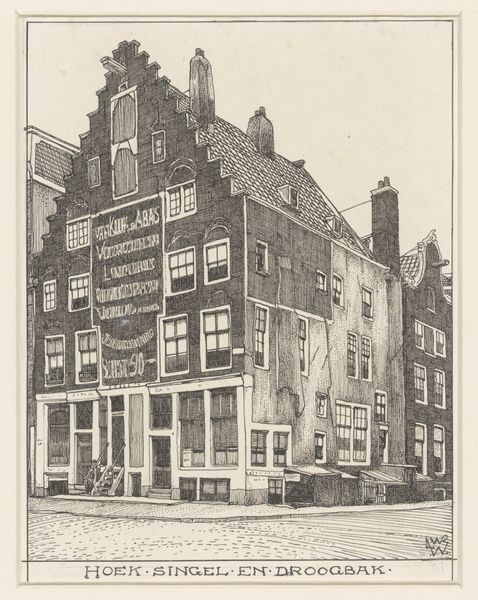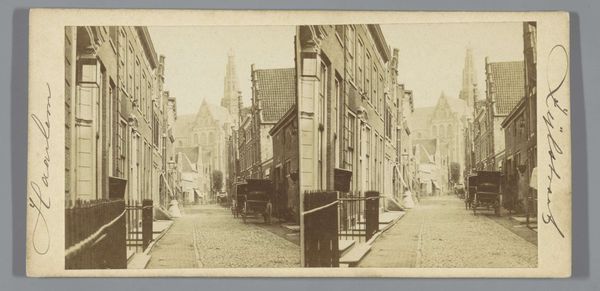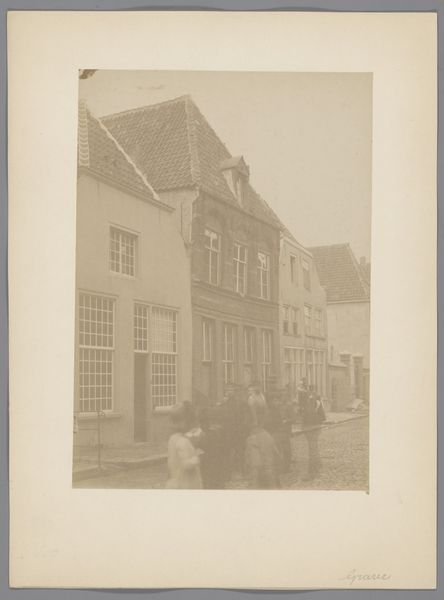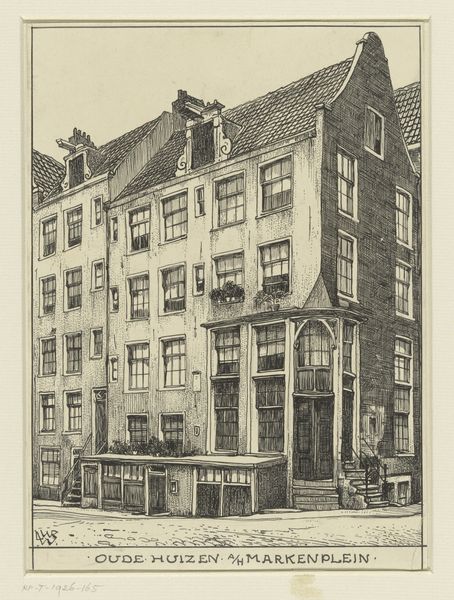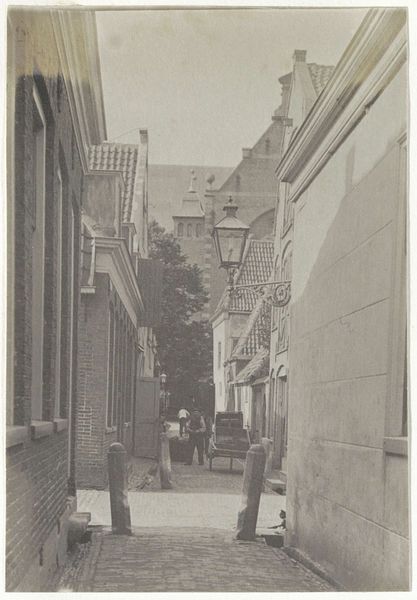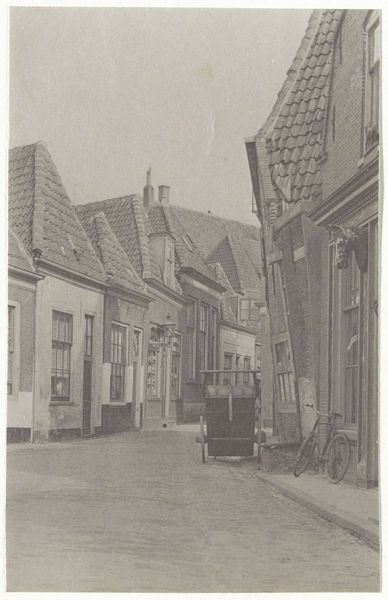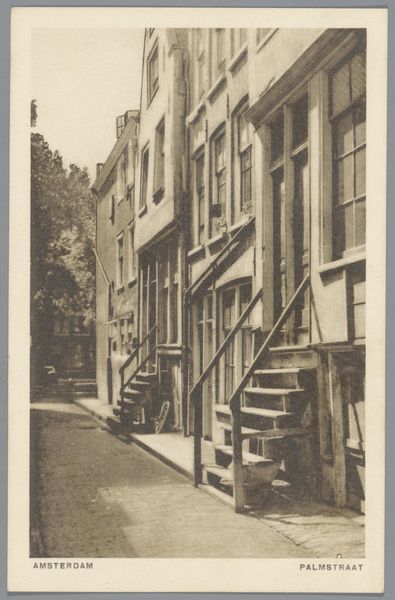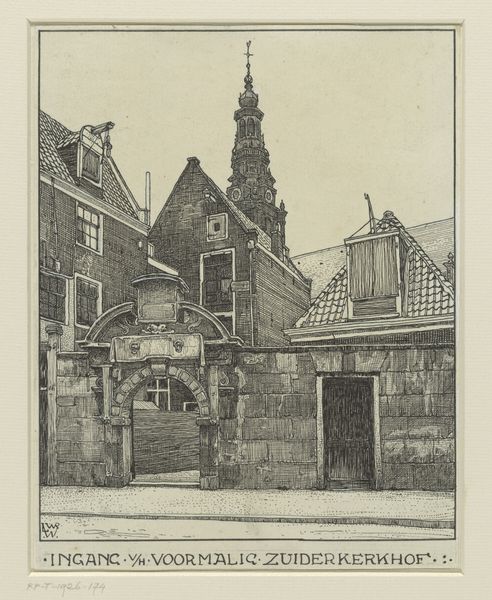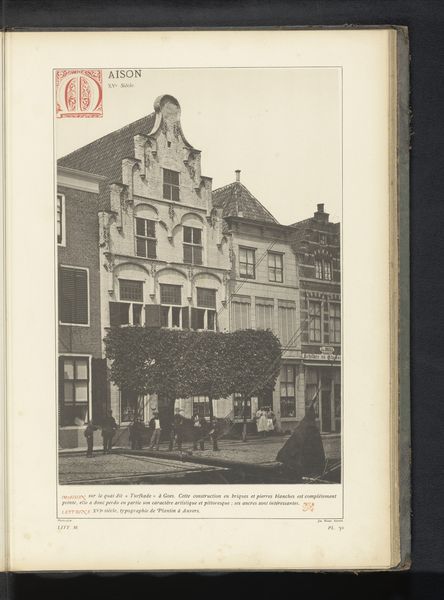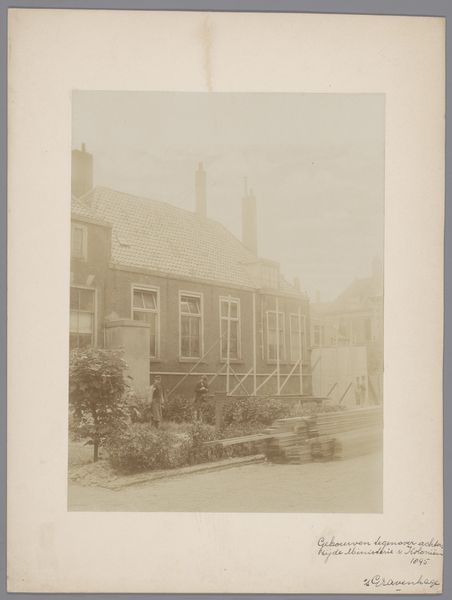
print, photography
#
dutch-golden-age
# print
#
landscape
#
street-photography
#
photography
#
historical photography
#
19th century
#
cityscape
#
street
Dimensions: height 140 mm, width 90 mm
Copyright: Rijks Museum: Open Domain
Curator: This piece invites you into a moment seemingly frozen in time. The print, "Amsterdam. Driehoekstraat", most likely captured between 1875 and 1930, shows a slice of Amsterdam life, a narrow street scene. I find it quite magical, a visual poem whispering stories from a bygone era. Editor: I agree, there’s a certain stillness, almost melancholy, that settles over you when you look at it. It’s not just the sepia tones of this historical photography, but the deep shadows and the relatively empty street. It feels... expectant. Curator: Exactly! It makes you wonder about the lives lived in those buildings. Those step-like gables... they must have seen so much. The way the light falls, it almost turns the mundane into something quite... theatrical. The simplicity is astonishing! Editor: The photograph as evidence is interesting here, isn't it? Street photography serves as a powerful sociohistorical register, revealing clues about class, labor, gender. The figure barely visible on the stoop--is it a domestic worker? Curator: Perhaps. Or even someone nipping out for some air. I rather love that uncertainty, how this anonymous photographer captured these candid moments and let the light do its work. Think about the choices made about point of view. Editor: Yes, the viewpoint definitely shapes our experience of the scene. It isn't centered, but a little offset which gives it an almost intimate, voyeuristic feel. I also consider the tension implicit in whose stories are deemed photographable. Whose labor gets framed as worthy of documentation and preservation? Curator: True, a really beautiful consideration. It brings depth to my emotional reaction, the almost wistful air about the image... the very tangible absence. We are not *invited* in, so what does that speak to, as you mentioned, that selective framing? Editor: Exactly! It asks us to question the archive itself, to examine what perspectives and histories might be missing, while acknowledging this photographer’s composition. Ultimately this visual moment serves to trigger conversations about the narratives we inherit and whose memories they truly represent. Curator: Gosh. Well, I shall ponder it further, but thank you for guiding us into the work a little more deeply. It’s made me reflect upon the weight of history held within these apparently still streets. Editor: It’s a gift art gives us: to see the world, past and present, with a renewed sense of urgency and compassion. Thank you for joining me in thinking through this piece, and encouraging an alternative engagement with a photograph so quiet.
Comments
No comments
Be the first to comment and join the conversation on the ultimate creative platform.
